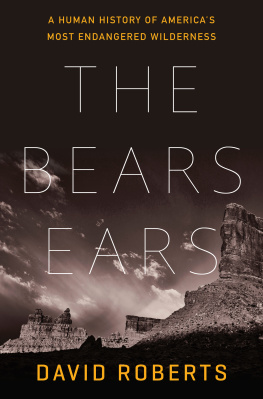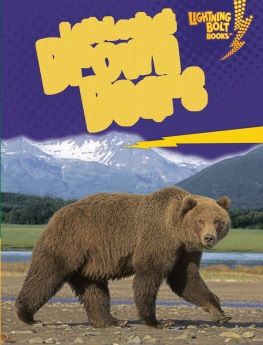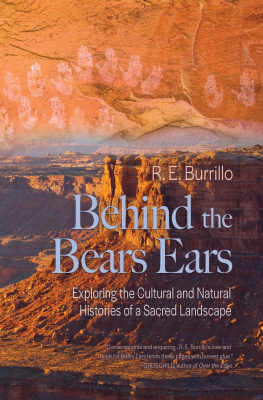Contents
Guide

ALSO BY DAVID ROBERTS
Escalantes Dream: On the Trail of the Spanish Discovery of the Southwest
Limits of the Known
Alone on the Wall (with Alex Honnold)
Alone on the Ice: The Greatest Survival Story
in the History of Exploration
The Mountain: My Time on Everest (with Ed Viesturs)
The Will to Climb: Obsession and Commitment
and the Quest to Climb Annapurna (with Ed Viesturs)
Finding Everett Ruess: The Life and Unsolved Disappearances
of a Legendary Wilderness Explorer
K2: Life and Death on the Worlds Most Dangerous Mountain
(with Ed Viesturs)
The Last of His Kind: The Life and Adventures of Bradford Washburn,
Americas Boldest Mountaineer
Devils Gate: Brigham Young and the Great Mormon Handcart Tragedy
No Shortcuts to the Top: Climbing the Worlds 14 Highest Peaks
(with Ed Viesturs)
Sandstone Spine: Seeking the Anasazi on the
First Traverse of the Comb Ridge
On the Ridge Between Life and Death: A Climbing Life Reexamined
The Pueblo Revolt: The Secret Rebellion That
Drove the Spaniards Out of the Southwest
Four Against the Arctic: Shipwrecked for Six Years
at the Top of the World
Escape from Lucania: An Epic Story of Survival
True Summit: What Really Happened on the
Legendary Ascent of Annapurna
A Newer World: Kit Carson, John C. Frmont, and the
Claiming of the American West
The Lost Explorer: Finding Mallory on Mount Everest
(with Conrad Anker)
Escape Routes
In Search of the Old Ones: Exploring the
Anasazi World of the Southwest
Once They Moved Like the Wind: Cochise, Geronimo,
and the Apache Wars
Mount McKinley: The Conquest of Denali
(with Bradford Washburn)
Iceland: Land of the Sagas (with Jon Krakauer)
Jean Stafford: A Biography
Great Exploration Hoaxes
Moments of Doubt
Deborah: A Wilderness Narrative
The Mountain of My Fear
THE BEARS EARS

A HUMAN HISTORY OF
AMERICAS MOST ENDANGERED
WILDERNESS
David Roberts

Copyright 2021 by David Roberts
All rights reserved
First Edition
For information about permission to reproduce selections from this book, write to
Permissions, W. W. Norton & Company, Inc., 500 Fifth Avenue, New York, NY 10110
For information about special discounts for bulk purchases, please contact
W. W. Norton Special Sales at specialsales@wwnorton.com or 800-233-4830
Jacket design: Kelly Winton
Jacket photograph: Bob Thomason / Getty Images
Production manager: Anna Oler
The Library of Congress has cataloged the printed edition as follows:
Names: Roberts, David, 1943 author.
Title: The Bears Ears : a human history of Americas most endangered wilderness / David Roberts.
Other titles: Human history of Americas most endangered wilderness
Description: First edition. | New York, NY : W.W. Norton & Company, [2021]
| Includes bibliographical references and index.
Identifiers: LCCN 2020042614 | ISBN 9781324004813 (hardcover) | ISBN 9781324004820 (epub)
Subjects: LCSH: Bears Ears National Monument (Utah)History. | Indians of North
AmericaUtahSan Juan CountyAntiquities. | Sacred spaceUtahSan Juan County. |
Cliff-dwellingsUtahSan Juan County. | Roberts, David, 1943 TravelUtah. |
San Juan County (Utah)Description and travel.
Classification: LCC F832.S4 R625 2021 | DDC 979.2/59dc23
LC record available at https://lccn.loc.gov/2020042614
W. W. Norton & Company, Inc., 500 Fifth Avenue, New York, N.Y. 10110
www.wwnorton.com
W. W. Norton & Company Ltd., 15 Carlisle Street, London W1D 3BS
For
Fred Blackburn
Vaughn Hadenfeldt
Greg Child
Of all my companions in my favorite place on earth,
You taught me the most
CONTENTS


THE BEARS EARS
I n no particular hurry, we hiked along the rim of one of the canyons on Cedar Mesa in southeast Utah. Hundreds of feet below, the stream trickled across slickrock slabs and plunged into grassy hollows. Id been friends with Vaughn Hadenfeldt for more than a decade. Along with his buddy Fred Blackburn, Vaughn had initiated me into the mysteries and glories of this 600-square-mile plateau, an upland quadrangle of pion-juniper forest scored by a dozen sandstone gorges. The best place in the whole United States, theyd told me when we first met, to find prehistoric rock art panels and unrestored ruins.
Id first arrived in 1992 to research a magazine article about a band of oddball wilderness devotees who were inventing a potent new discipline called reverse archaeology and lobbying hard for an ethic that Fred called the Outdoor Museum. Instead of gathering up artifacts for curation in some research facility far from Cedar Mesa, Fred and Vaughn argued, you should leave everything in place, so that the next hiker who stumbled upon some dazzling relic from the past could share the magic of discovery.
I was instantly hooked. Long after my magazine piece was published, I kept returning to Cedar Mesa to prowl with Vaughn and Fred, and I brought my own friends out there to show them the things and places I had found.
On this breezy spring day in the late 2000s, as we sauntered along the canyon rim, Vaughn and I paused on promontories to raise our binoculars and train them on the far canyon wallsglassing, as Vaughn called it. In 1995, Vaughn had founded Far Out Expeditions, pledging his life to guiding clients to ancient wonders on Cedar Mesa and beyond. And in 1996, Id published In Search of the Old Ones , a memoir about my discovery of the prehistoric Southwest, with a chapter titled In Praise of Cedar Mesa.
But on his off days, Vaughn loved nothing better than to go out looking for granaries and dwellings and friezes of petroglyphs hed never seen before. I did the same on my semiannual pilgrimages to Cedar Mesa, and when we teamed up to search, the game took on a mildly competitive zest.
That day wed already spotted a couple of minuscule granaries far off the ground on the nearly vertical opposite wall. We couldnt see any way to get to them except by rappelling, and the use of ropes to approach prehistoric sites on Cedar Mesa was interdicted by the Bureau of Land Management officials who regulated the place. More to the point was Vaughns and my certainty that rappelling had not been the way the ancients had reached those two small ledges, on which they had mortared stones with mud to build bins to store the precious corn.
I was ready to hike on, but Vaughn had swiveled his binocs far to his right. Check it out, he said quietly. Somethin right under the capstone layer. Way back, maybe half a mile. I raised my Leica Trinovids, found the spot, and focused. Wow, I muttered. Nice glassing.
It would take us another day to hike to the site, as we circled back almost to the head of the canyon before traversing the far rim. On the way, we discovered that the ruin could not be seen from directly opposite it. Nor was there any hint of it as we made our way along the capstone layer that guarded the elusive prize. We kept tiptoeing out to the edge of the cliff to peek sideways underneath its brim, never an easy task in the canyon country. As a landmark, we had memorized a pair of water streaks that gleamed silver in the sun on the side of the gorge wed first walked. They were easy to spot from across, but the locational anchor they offered gave us little help. We later realized that the ruin could be detected only from the vantage point where Vaughn had first seized it in his binocs. That invisibility had been a cardinal advantage for long-ago architects living in daily fear.


















